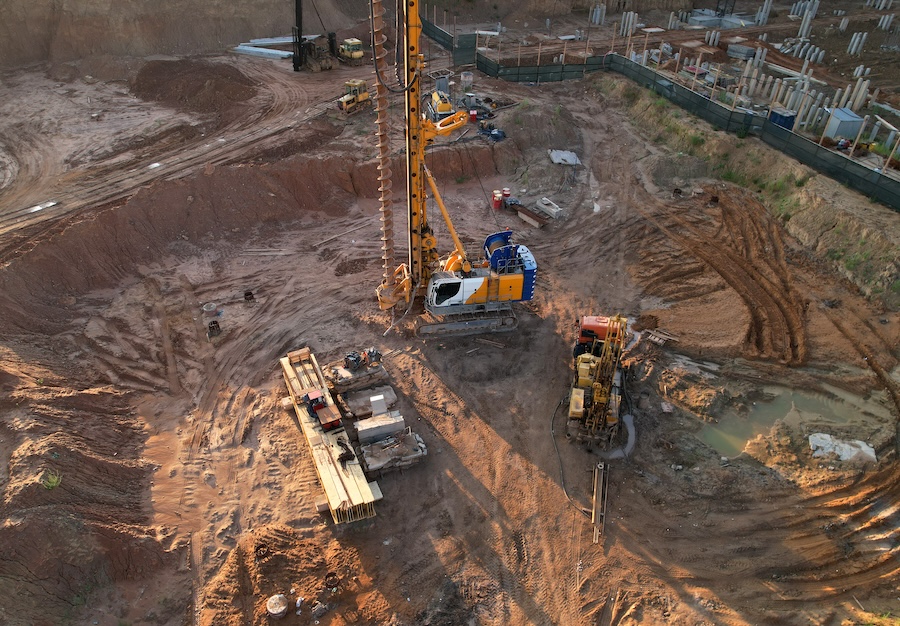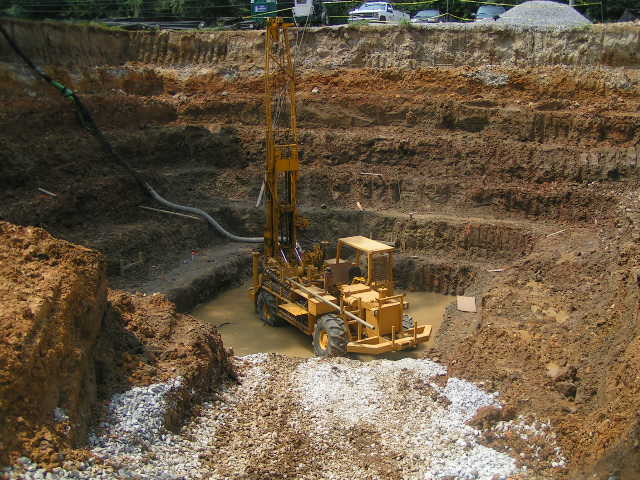Geotechnical Engineering in South Africa: Comprehensive Services for Building and Advancement
Wiki Article
Just How Consulting Civil Engineering Firms Contribute to Effective Project Monitoring and Layout Implementation
Consulting civil design companies are indispensable to the success of building jobs, merging technical effectiveness with tactical oversight. Their role includes not only the implementation of expediency studies however also the application of innovative task administration approaches that simplify procedures and improve stakeholder involvement. By concentrating on style optimization and danger mitigation, these companies guarantee that tasks are not just practical yet cost-effective and likewise lasting. However, the subtleties of their payments frequently stay underexplored, triggering a more detailed evaluation of the details methods and methods that underpin their effectiveness - geotechnical engineering companies in south africa.Role of Civil Designers
Recognizing the duty of civil engineers is essential for the effective monitoring of building and construction jobs. Civil designers function as the backbone of infrastructure development, ensuring that projects are created and implemented to fulfill functionality, security, and sustainability requirements. Their know-how encompasses various facets of engineering, consisting of structural, environmental, and geotechnical specialties.Civil engineers are accountable for carrying out expediency researches, which evaluate the feasibility of suggested projects by evaluating financial, technical, and ecological aspects. They establish comprehensive blueprints and specs, integrating innovative services to enhance products and sources. During the construction stage, civil engineers manage the project, teaming up with contractors, architects, and stakeholders to make sure adherence to design specifications and governing requirements.

Task Preparation Strategies
Reliable project planning methods are important for ensuring that construction projects are carried out smoothly and efficiently. Consulting civil design firms play a critical duty in this procedure by using thorough planning methods that attend to numerous job phases. At first, a detailed evaluation of task extent and customer demands is performed, enabling the identification of important milestones and deliverables.Moreover, these firms use devices such as Gantt charts and job monitoring software to produce detailed timelines, allowing reliable scheduling of tasks and source appropriation. This organized approach assists to expect potential bottlenecks and designate essential sources proactively. Threat monitoring is one more crucial element; companies conduct threat assessments to recognize prospective concerns that can develop throughout the job's lifecycle, executing reduction techniques to decrease interruptions.
Additionally, stakeholder engagement is highlighted throughout the planning stage. Routine communication with clients, contractors, and regional authorities makes sure that all celebrations are straightened with project objectives and timelines. By incorporating these strategies, consulting civil engineering companies enhance the likelihood of task success, making sure adherence to budget restrictions and governing requirements while cultivating a joint environment.
Design Optimization Techniques
Style optimization methods are crucial for improving the performance and sustainability of civil design projects. These strategies involve the systematic assessment of style parameters to achieve the ideal feasible outcomes while reducing costs and resource usage. By making use of sophisticated computational devices and formulas, designers can assess various style options and select the most effective alternatives based on certain job standards.One extensively used method is parametric layout, which permits the manipulation of style variables to observe their effect on overall job efficiency. This iterative process causes cutting-edge services that not just satisfy useful needs yet likewise follow environmental requirements. Furthermore, strategies such as value design emphasis on maximizing project aspects to maximize value while lowering unneeded prices.
Moreover, the combination of Structure Details Modeling (BIM) assists in far better partnership amongst stakeholders, enabling real-time adjustments and improvements to designs. This all natural view cultivates a thorough understanding of the job, causing educated decision-making. Ultimately, reliable layout optimization strategies cause boosted project timelines, minimized waste, and improved structural efficiency, contributing to the total success of civil design ventures.
Danger Management Strategies
Danger administration approaches are important in making certain the effective shipment of civil design tasks, as they aid identify, assess, and alleviate potential threats that can affect task results. Efficient danger administration is a methodical procedure that includes the identification of threats, examination of their possibility and effect, and the growth of techniques to resolve them.Consulting civil engineering firms commonly utilize a mix of qualitative and measurable danger analysis methods (geotechnical engineering companies in south africa). Qualitative approaches, such as conceptualizing sessions and skilled meetings, assistance gather insights on potential threats from different stakeholders. Alternatively, quantitative strategies entail statistical evaluation and modeling to establish the possibility and prospective effect of recognized risks
When risks are evaluated, companies execute mitigation strategies, which might consist of threat evasion, transfer, approval, or reduction. consulting engineers This can involve redesigning project elements to eliminate dangers or protecting insurance to counter prospective financial losses. Continuous monitoring and evaluation of risks throughout the project lifecycle are likewise necessary, permitting timely modifications to take the chance of administration strategies as brand-new hazards arise.
Collaborative Communication Practices
Enhancing project end results with collective communication techniques is important for seeking advice from civil engineering companies. Reliable communication promotes a culture of openness and count on amongst stakeholders, which is essential for the effective implementation of engineering projects. By carrying out organized communication channels, companies can make sure that all events-- customers, contractors, and staff member-- are aligned on project goals, deliverables, and timelines.Normal meetings, both casual and formal, promote the exchange of ideas and feedback, permitting real-time analytic and decision-making. Utilizing joint tools such as project administration software application motivates documentation and tracking of progression, while allowing instant access to essential information.
Furthermore, active listening and open dialogue are crucial components in a joint atmosphere. By valuing diverse point of views, firms can innovate and adjust styles that satisfy both technical needs and client expectations. Furthermore, cultivating a team-oriented ambience decreases misunderstandings and boosts the overall high quality of job.

Final Thought
In conclusion, consulting civil design firms are essential to successful job management and design application. Eventually, the expertise and methods utilized by getting in touch with civil designers substantially add to achieving project goals while lessening costs and making the most of resource application.
In final thought, consulting civil engineering firms are essential to successful project monitoring and style application.
Report this wiki page